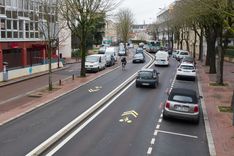The number one reason why people don’t cycle is fear - fear of sharing the road with cars. Cycling lanes put distance between riders and motorists, and are proven to make cycling safer.
If you want to get people to cycle, you need to build cycle lanes.
However, not all cities have the financial means to build cycling infrastructure city-wide, nor can they implement cycle lanes quickly enough to divert people away from using cars.
With this in mind, are cycling lanes imperative for a strong, and safe, cycling culture?
Roads are for everyone
Patrice Pattée, the Deputy Mayor of Sceaux (a city just outside of Paris), is a big cycling advocate. Since 2008, has been on the board of directors of the ‘Club des villes et territoires cyclables’ (Cycling Cities Club), with the goal of turning his personal convictions on active mobility into genuine, transformative local policy.
Pattée and Sceaux are challenging the traditional outlook on cycling infrastructure. He believes that segregating modes of transport can be divisive, and counter-productive when trying to form a healthy, inclusive community:




